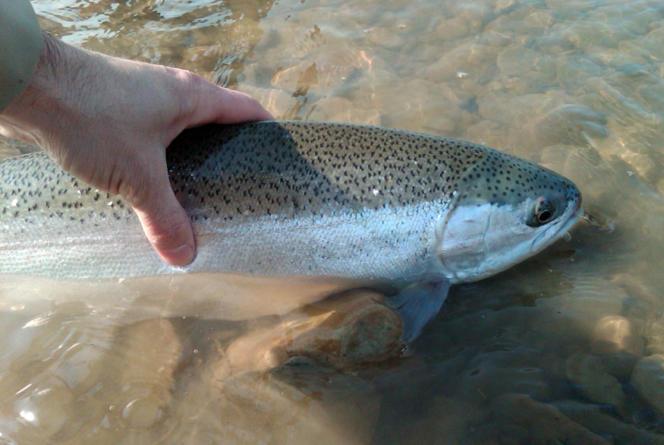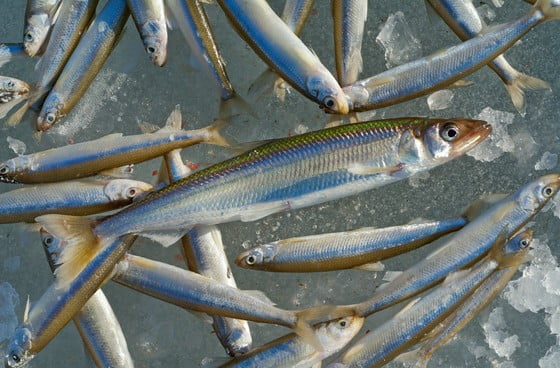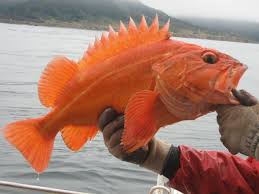
The Division of Wildlife annually stocks selected Lake Erie tributary streams with 6-8″ yearling steelhead. These fish (called “smolts”) migrate out into Lake Erie and spend the summer in the cooler part of the lake before returning to streams during the fall through the spring. Steelhead trout caught by anglers in the streams typically average 25″ long and weigh 5-6 pounds. These fish have usually spent 2-3 summers out in the lake (see growth chart below). However, there are a good number of fish that are over 30 inches and weigh more than 10 pounds and have spent up to five summers in the lake.
Eggs are procured each spring from egg-taking operations in Michigan by the Michigan DNR (Little Manistee strain) and in Wisconsin by the Wisconsin DNR (Chambers Creek and Ganaraska strains). The steelhead strains we use are proven in Lake Erie and provide steelhead runs in our tributaries from fall through spring. Eggs are raised at our Castalia State Fish Hatchery for around 11-12 months to the yearling stage, averaging 6-8″ at release.
Ohio’s primary steelhead streams are Vermilion, Rocky, Chagrin, Grand and Ashtabula rivers and Conneaut Creek. The Rocky, Chagrin and Grand rivers are scheduled to each receive 90,000 yearling steelhead annually. Conneaut Creek is scheduled to receive 75,000 fish from Ohio and 75,000 fish from the Pennsylvania Fish & Boat Commission each spring. The Vermilion River is scheduled to receive 55,000 steelhead annually. The Ashtabula River has begun to receive annual steelhead plants, now that water quality and habitat has improved, and annual hatchery production has exceeded 400,000 yearlings on a routine basis. Total targeted annual stocking numbers projected from Ohio’s Castalia State Fish Hatchery is at around 450,000 steelhead.
Several other rivers including the Cuyahoga, Huron and Black rivers, and Arcola, Cowles, Wheeler, French, Euclid, Turkey, Beaver and Cold creeks get runs of stray steelhead. While Ohio Division of Wildlife fisheries biologists have noted a small amount of natural reproduction, it varies greatly from year-to-year. It is too low and erratic to support the quality fishery that has been developed and that anglers have come to expect. Good quantities of cold, spring water and adequate juvenile trout habitat are also rare in NE Ohio’s Lake Erie tributaries. The fantastic fishing has been maintained by annual stocking and by the practice of most anglers to catch and release.

